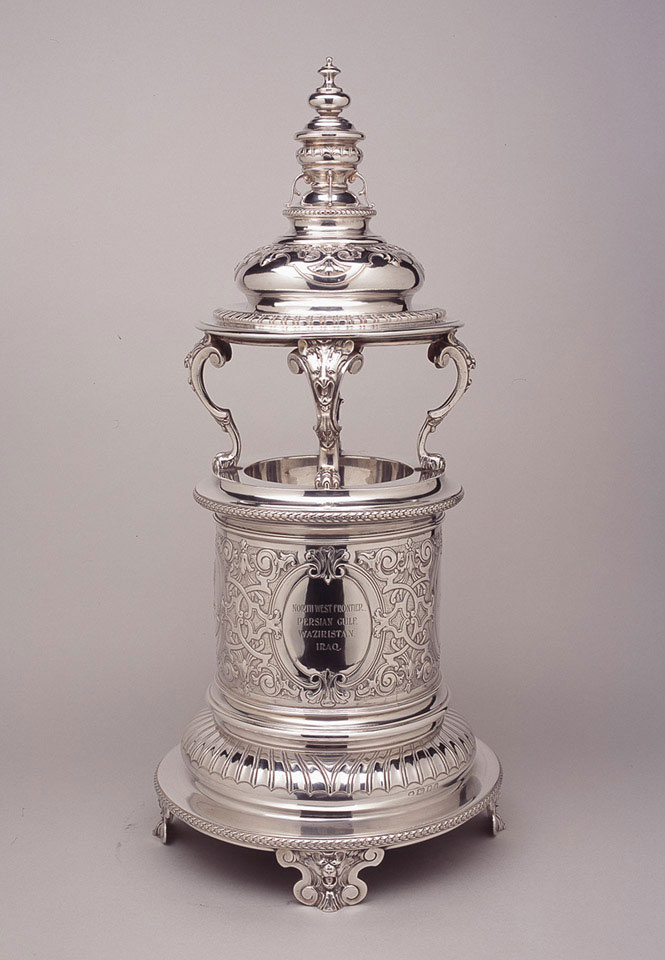
Online Collection
Salt dish commemorating the services of the 94th Russell's Infantry, 1924 (c)
Made by B E Ltd, London; hallmarked London 1924-1925.Inscribed: 'The Great War, North West Frontier, Persian Gulf, Waziristan, Iraq'.
94th Russell's Infantry traced its lineage back to 1813 when Sir Henry Russell raised the 1st Battalion, Russell's Brigade. In 1826 it was renamed 1st Regiment of Infantry, Nizam's Army. In 1854 it became the 1st Infantry, Hyderabad Contingent. The regiment was renamed as the 94th Russell's Infantry as part of Lord Kitchener's major reforms of the Indian Army in 1903.
In 1914 the regiment comprised three companies of Rajputs, two companies of Jats, and three companies of Dekhani Muslims. The regiment was based in Bolarum in Hyderabad at the outbreak of World War One (1914-1918), and was attached to the 55th Indian Brigade, 18th Indian Division for the campaign in Mesopotamia. The unit participated in the Fat-ha Gorge and Little Zab actions and fought at the Battle of Sharqat from 28-30 October 1918.
In June 1917 a 2nd Battalion, 94th Russell's Infantry was raised and remained in India for home service with the Jubullpore Brigade, before being disbanded in December 1920.
After World War One, the Indian Army shifted from single battalion infantry regiments to multi-battalion regiments, and in 1922 the 94th Russell's Infantry became the 1st Battalion, 19th Hyderabad Regiment.
Most items of mess silver were donated by officers when they joined or left the regiment, although objects were sometimes given when an officer married, for victory celebrations or as a forfeit for losing a bet or sporting contest.
NAM Accession Number
NAM. 2002-07-1-1
Copyright/Ownership
National Army Museum, London
Location
National Army Museum, Study collection
Object URL
https://collection.nam.ac.uk/detail.php?acc=2002-07-1-1


